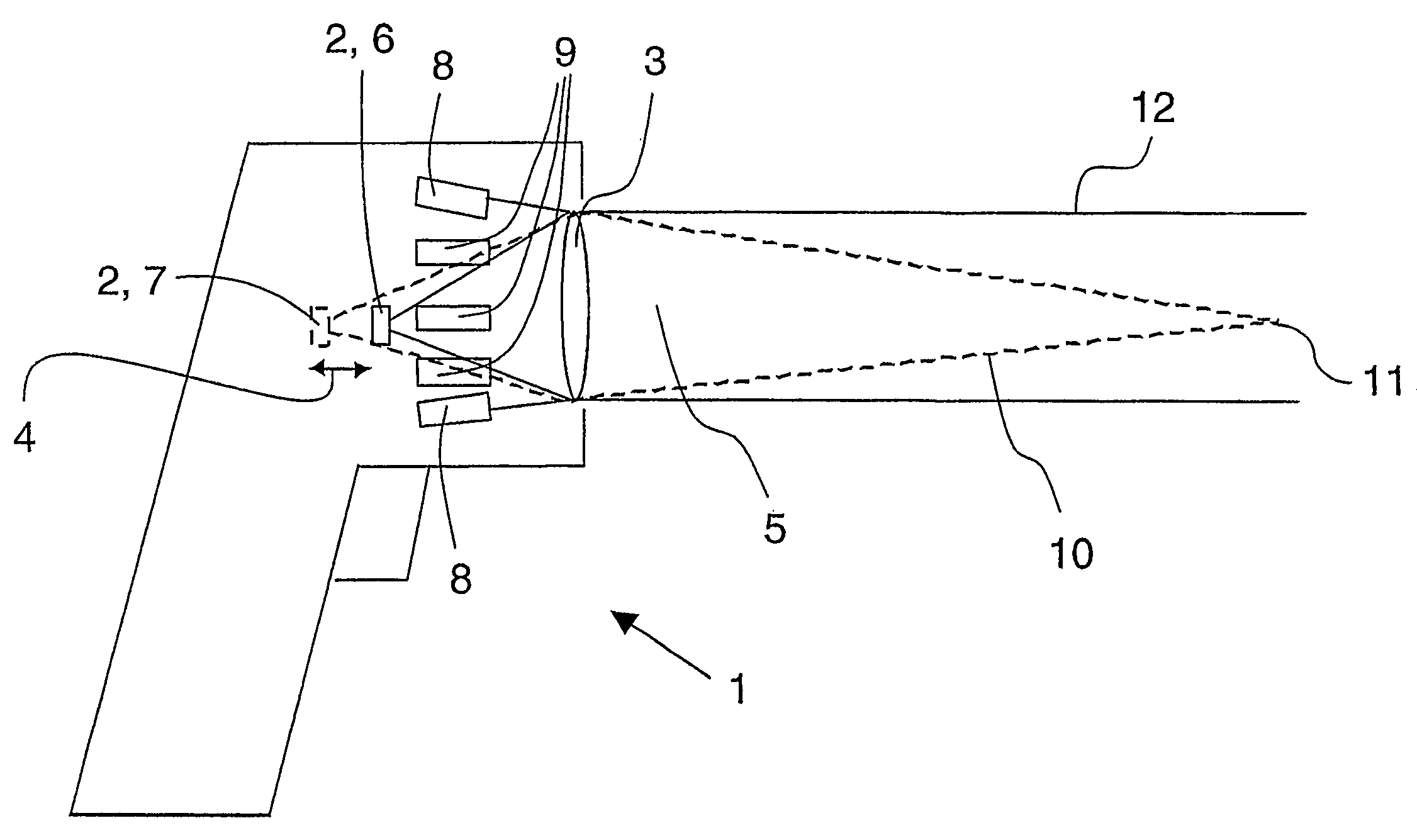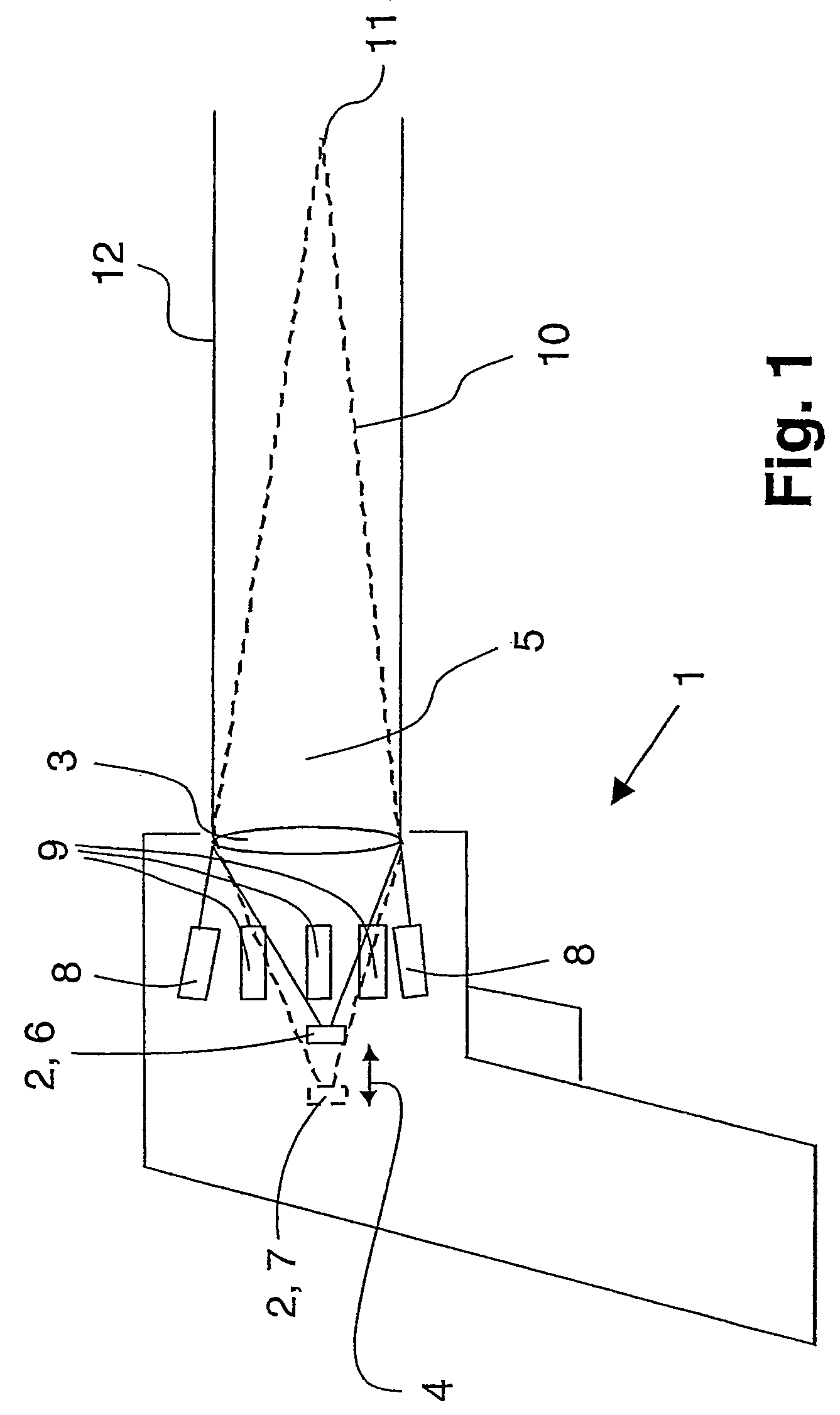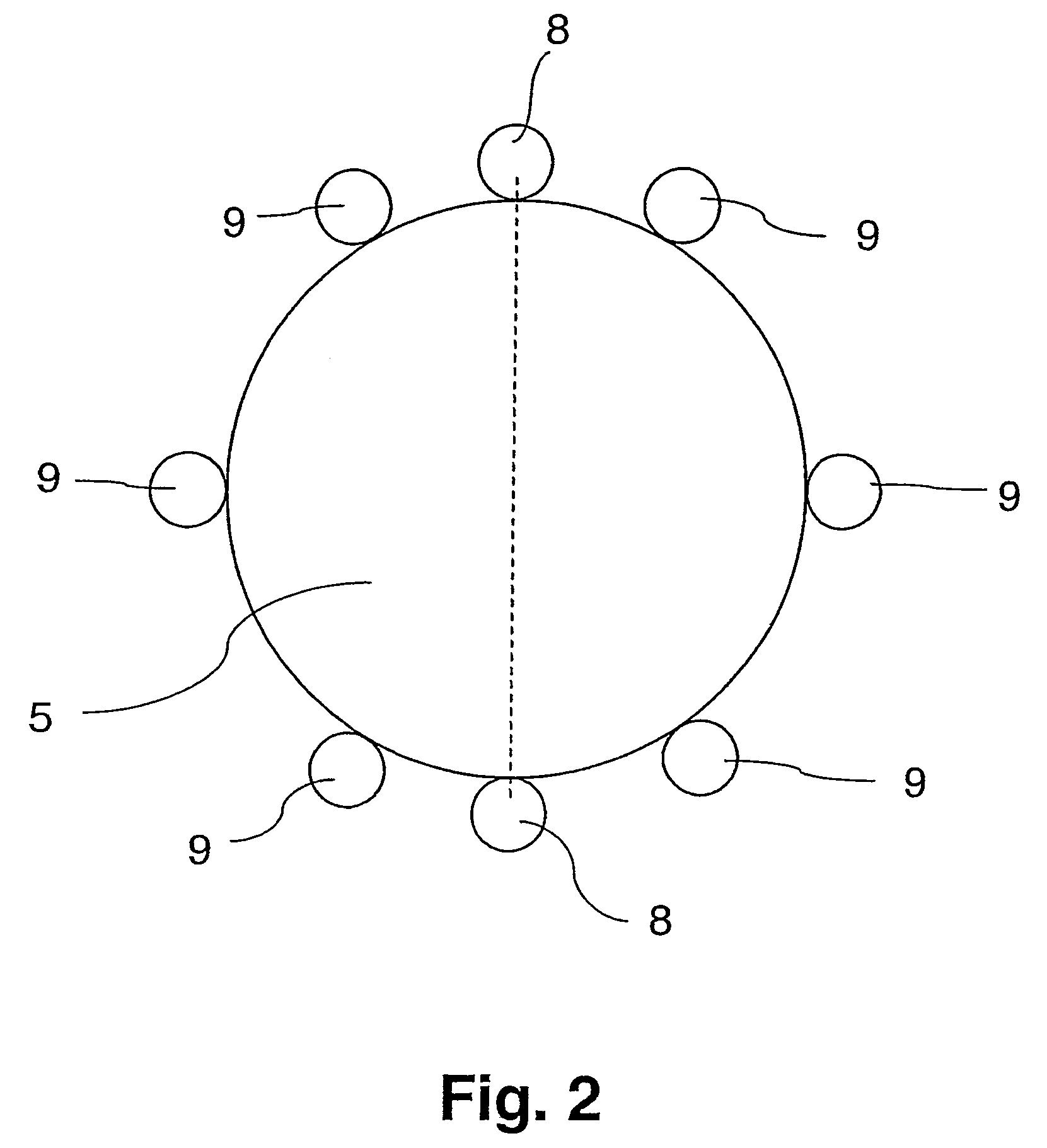Device for contact-free measurement of temperature
a technology of contact-free measurement and temperature, which is applied in the direction of thermometers, instruments, photometry, etc., to achieve the effect of simple means
- Summary
- Abstract
- Description
- Claims
- Application Information
AI Technical Summary
Benefits of technology
Problems solved by technology
Method used
Image
Examples
Embodiment Construction
[0030]FIG. 1 shows in schematic side view a conceptual representation of a device according to the invention for contact-free temperature measurement in the form of a manual measuring device 1. Therein the measuring device 1 comprises an IR detector 2, onto which the thermal radiation emanating from an object (not represented) can be imaged by means of an optical system. In the embodiment example according to FIG. 1, the optical system is implemented as a simple convex lens 3 which focuses the thermal radiation onto the detector 2.
[0031]As indicated by the double arrow 4, the detector 2 is precisely and reproducibly traversable between two positions along the axis of an IR optical canal 5. In concrete terms, it is, in one case, the position 6, marked with solid lines, which corresponds to the distant position of the measured spot focus point. In this case the detector 2 is disposed at the focal point of the convex lens 3 and is consequently imaged at infinity by the convex lens 3. T...
PUM
| Property | Measurement | Unit |
|---|---|---|
| distance | aaaaa | aaaaa |
| angle | aaaaa | aaaaa |
| diameter | aaaaa | aaaaa |
Abstract
Description
Claims
Application Information
 Login to View More
Login to View More - R&D
- Intellectual Property
- Life Sciences
- Materials
- Tech Scout
- Unparalleled Data Quality
- Higher Quality Content
- 60% Fewer Hallucinations
Browse by: Latest US Patents, China's latest patents, Technical Efficacy Thesaurus, Application Domain, Technology Topic, Popular Technical Reports.
© 2025 PatSnap. All rights reserved.Legal|Privacy policy|Modern Slavery Act Transparency Statement|Sitemap|About US| Contact US: help@patsnap.com



